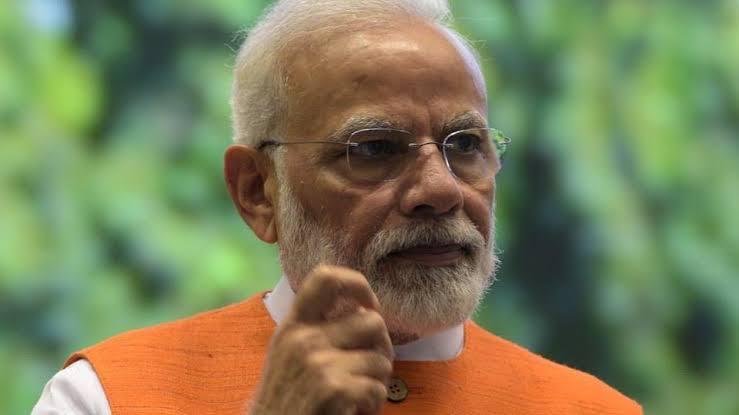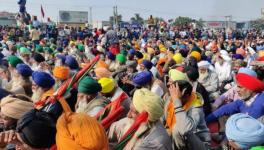PM Modi’s Official Twitter Handle Draws Supremacists

On January 13, President Donald Trump retweeted an evidently doctored image of United States Congressional House Speaker Nancy Pelosi and United States Senator Chuck Schumer in Middle Eastern garb together in front of an Iranian flag. In the image, Pelosi is wearing a hijab and Schumer has a turban on his head with “Democrats 2020” written on the bottom of the image. The tweet accompanying the photo reads, “the corrupted Dems trying their best to come to the Ayatollah's rescue”. Trump retweeted the image from an anonymous account with the alias “D0wn_Under”, which has previously tweeted out other conspiracy theories around Pelosi and Iran.
This is not the first time President Trump has been accused of tweeting Islamophobic content. Immediately following the Christchurch mosque massacre of March 2019, Trump linked (but later deleted) to a story posted on the alt-right and known Islamophobic site, Breitbart News. The article was both offensive and flippant criticising not the attacker but Facebook for deleting the man’s white nationalist and anti-immigrant manifesto.
His most recent tweet came at a sensitive period of heightened tensions with Iran but for Trump any diplomatic decorum meant little. His constant proffering of anti-Muslim sentiments, critics argue, put Muslim Americans at risk. Recent studies have found Islamophobic sentiment on the rise in the United States and that Trump's tweets about Islam are correlated with rise in anti-Muslim hate crimes. While Trump is abrasively Islamophobic in his tweeting, Prime Minister Narendra Modi’s social media engagement on this topic is a bit different.
I studied 355,129 responses of Modi’s followers on his @narendramodi, Prime Minister Modi’s official twitter account, leading up to the month before the general election of 2019. The analysis revealed that like Trump, Modi tweeted often. There was a total of 364 tweets, compared to Rahul Gandhi’s 49, in the 30 days leading up to his election victory. Unlike Trump, the Prime Minister rarely used words such as “Islam” or “Muslims”, or shared memes or links which represented Islamophobic content. His followers, however, unabashedly understood his rhetoric and language as expressing nothing but Hindu majoritarian sentiments.
Hindu identity overrode every other theme that was found in the responses, irrespective of what Modi tweeted or what he said in his speeches. Even if he were tweeting about development, campaign stops, or government policies, his followers predominantly associated his rhetoric as representing Hindu supremacy.
The highest number of responses—over 1,25,000—were Hindu chants and slogans: “Jai Shree Ram” (Hail Lord Rama), “Hai Mere Prabhu” (My Lord), “Vande Mataram” (Glory to Mother India), and “Om Namah Sivah” (Pray to Lord Shiva). Also popular was the slogan “Har Har Modi” which is a twist on the old temple chant “Har Har Mahadev.”
Along with Hindu chants, there were comments that belaboured the marginalisation of the Hindu majority. While some of these were responses to Modi’s tweets attacking opposition parties and opposition leaders, many comments were without any specific context.
Two common hashtags were #StopHinduGenocide and #Hindusundersiege. A parallel set of responses were about the opposition parties, especially Congress leaders Mamata Banerjee, Rahul Gandhi, and Priyanka Vadra as either being anti-Hindu or being sympathetic to minority Muslims. The use of memes was prevalent with frequent images of Rahul Gandhi doing the namaaz (Muslim prayer). Some of the memes presented Rahul Gandhi as wearing topis (skull cap) with facial hair or goatees and holding a Quran.
One highly-circulated meme depicted Banerjee as a Muslim woman who secretly wanted Modi to win the elections. It showed Banerjee wearing a hijab and saying, “Don’t tell anyone but by Allah’s will it will be Modi again.”
Ian Haney Lopez in his book titled, “Dog Whistle Politics: Strategic racism, fake populism, and the dividing of America” refers to this kind of political rhetoric as “dog whistle politics” where attacks on minorities and other marginalised groups are not blatant forms of hate but a “discursive chameleon” that can be plausibly denied even as it stirs animosity.
Lopez traces this style back in recent memory to the 1980 United States presidential political campaign of Ronald Reagan who told stories of Cadillac-driving “welfare queens” and “strapping young bucks buying T-bone steaks” with food stamps. In trumpeting these tales of men and women living off government supported welfare checks, Reagan never needed to mention race of the recipients, because he was blowing a dog whistle: sending a message about racial minorities inaudible on one level, but clearly heard on another.
Dog whistle appeals generate enthusiasm for political candidates, writes Lopez, who promise to crack down on crime, curb immigration, and protect the country against minority infiltration, but ultimately vote to give corporations regulatory control over industry and financial markets, and aggressively curtail social benefits such as free education. Such voters, now convinced by powerful interests that minorities are their true enemies, fail to see the connection between the political agendas they support and the surging inequality and environmental crisis that is taking an increasing toll on their lives.
As anti-CAA protests continue, Modi’s dog whistle politics has become more transparent. In December, Modi said in a speech, “People who are setting fire (to property) can be seen on TV. They can be identified by the clothes they are wearing.”
One media outlet reported Modi’s remark as “the Prime Minister provided no further elaboration on the reference to clothing” but such is the proliferation and consolidation of dog whistle politics that Modi’s references to clothes were meant to instantly conjure pre-existing cultural imagery of Muslim men in topis and shalwar kameez as arsonists hurling rocks and setting police vans on fire.
While Trump openly tweets Islamophobic memes and comments, Modi’s Islamophobia is coded—and they both resort to deniability when needed. What they share in common is to abet fear to consolidate their political base invested in majoritarian supremacy.
The author teaches at the Department of Communication Studies, State University of New York, Plattsburgh. The views are personal.
Get the latest reports & analysis with people's perspective on Protests, movements & deep analytical videos, discussions of the current affairs in your Telegram app. Subscribe to NewsClick's Telegram channel & get Real-Time updates on stories, as they get published on our website.
























